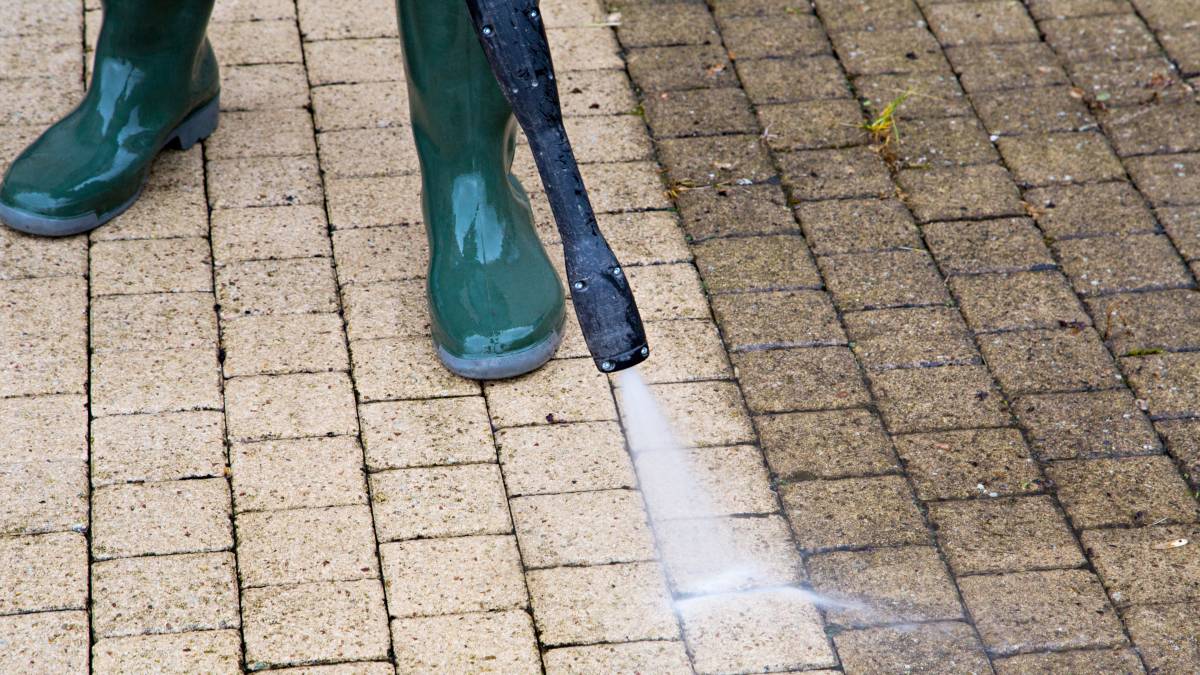Explore Comprehensive Cleaning Packages Supplied by Pressure Washing Lockhart Specialists
Explore Comprehensive Cleaning Packages Supplied by Pressure Washing Lockhart Specialists
Blog Article
Revitalize Your Home: The Ultimate Guide to Stress Laundering
Stress cleaning is a very useful tool for home owners intending to restore the aesthetic allure and longevity of their residential or commercial properties. To navigate these complexities and achieve optimum outcomes, it is essential to check out the essential aspects of stress washing, including useful guidance on addressing common spots and making sure safety and security throughout the procedure.
Understanding Pressure Laundering
Pressure cleaning is a powerful cleaning technique that utilizes high-pressure water spray to remove dirt, gunk, mold and mildew, and other pollutants from different surfaces. This method is specifically reliable on difficult surface areas like driveways, sidewalks, decks, and home siding, where conventional cleansing methods might fall brief. By employing customized equipment that generates high-pressure streams of water, pressure washing can penetrate deeply into surface areas, efficiently displacing and removing persistent particles.
The procedure is not just efficient however likewise ecologically pleasant, as it frequently counts exclusively on water, reducing the need for extreme chemical cleaners. Additionally, pressure cleaning can boost the visual appeal of properties, maintaining their worth and lengthening the lifespan of surface areas by protecting against degeneration triggered by pollutants.

Picking the Right Tools
Picking the proper devices is critical for attaining ideal outcomes in stress washing. The first decision entails selecting in between electrical and gas stress washers. Electric designs are usually lighter, quieter, and ideal for residential tasks like cleansing cars or patios. Gas units, on the other hand, offer greater pressure and circulation rates, making them perfect for larger tasks such as cleaning driveways or exterior siding.
Next, think about the pressure ranking, determined in pounds per square inch (PSI) For light-duty jobs, a pressure washing machine with 1,300 to 1,600 PSI suffices, while medium-duty tasks commonly require 1,600 to 2,500 PSI. Sturdy tasks may demand equipments exceeding 2,500 PSI.
In addition, the circulation rate, determined in gallons per minute (GPM), affects cleaning performance (Pressure Washing Lockhart). A greater GPM permits quicker cleaning yet might call for more effective devices
Methods for Efficient Cleansing

The method of overlapping strokes is essential for also protection. In addition, maintaining a consistent range from the surface area, commonly 12 to 18 inches, enables for effective application without causing harm.
Making use of the appropriate nozzle is also necessary. A wide-angle nozzle is perfect for bigger areas, while a narrow nozzle can target persistent dust or grime. Making use of a sweeping motion instead than a stationary spray aids to prevent concentrated locations of pressure, which can lead to surface area damage.

Tackling Common Discolorations
When it comes to maintaining the look of outside surface areas, resolving common discolorations successfully is essential for extending their life expectancy and boosting aesthetic charm. Different surface areas, including plastic, timber, and concrete, can build up stains from natural products, oils, and toxic wastes, demanding a targeted method.
For oil spots, a combination of degreasers and stress cleaning can generate outstanding results. Apply the degreaser to the tarnished area, enabling additional reading it to pass through prior to utilizing a stress washing machine to remove the residue. Organic discolorations, such as mildew or algae, commonly need an option having bleach or a dedicated mold remover, adhered to by pressure cleaning to restore the surface area's initial look.
Rust discolorations, typically found on steel surface areas, may demand customized corrosion eliminators. Use the product and scrub the location prior to stress washing to remove any type of sticking around staining. It is necessary to evaluate any type of cleaning remedy on a small, low-profile area first to prevent damage.
Safety Tips and Ideal Practices
Guaranteeing safety and see here now security while stress cleaning is critical, as the high-pressure water can posture considerable dangers otherwise managed appropriately. To shield yourself and others, constantly use suitable individual protective tools (PPE), consisting of safety and security goggles, gloves, and sturdy footwear. This gear will protect you from flying particles and the potential for injury.
Before beginning, inspect the stress washing machine for any type of leakages or damaged parts. Familiarize yourself with the devices's guidebook to recognize its operation and safety and security functions. Furthermore, make sure the area you are operating in is complimentary of barriers and that any type of electric connections are safe from water exposure.
When operating the stress washer, maintain a risk-free distance from surfaces and stay clear of aiming the nozzle at people, family pets, or delicate objects. Make use of the appropriate nozzle for the job, as various nozzles generate differing spray patterns and stress degrees. Finally, bear in mind your environments: secure loose items, look for electrical view it now lines, and prevent working in wet problems that might lead to drops or slips.
Verdict
In verdict, stress cleaning offers as a crucial tool for property owners seeking to enhance building looks and longevity. By comprehending the details of tools selection, efficient cleaning methods, and typical stain elimination, the capacity for rejuvenating one's home ends up being noticeable.
Pressure washing is a powerful cleaning technique that uses high-pressure water spray to get rid of dirt, grime, mold and mildew, and various other impurities from numerous surfaces. By employing specific devices that creates high-pressure streams of water, stress washing can permeate deeply right into surfaces, effectively dislodging and washing away persistent particles.
Nevertheless, it is important to understand that stress cleaning needs a specific level of ability and understanding to stay clear of harmful surfaces. Softer materials like wood or painted surfaces necessitate a reduced stress setting to avoid damage, whereas concrete or block surfaces can stand up to greater pressure degrees.
Organic discolorations, such as mold or algae, usually call for a remedy consisting of bleach or a committed mold and mildew cleaner, complied with by pressure washing to bring back the surface area's initial look. - Pressure Washing Lockhart
Report this page